Alan E. Carman Museum of Prehistory
1461 Bridgeton Road
Greenwich, NJ 08323
(856) 455-8141
Click to access prehistorical.pdf
Admission: Free
Open: Sunday 12:00pm-4:00pm/Monday-Friday Closed/Saturday 12:00pm-4:00pm/Seasonal April-mid-December/Closed on holidays.
My review on TripAdvisor:

The front of the museum

I stopped in at the Museum of Prehistory after a tour of several other historical sites in the area and this little museum is packed with interesting artifacts.

The main gallery
One section was dedicated to the Lenape Indians who lived in the area. There were many artifacts such as arrow heads, spears, pottery and an assortment of fishing and cooking materials. The Native Americans had an interesting system of living that adapted to nature. They developed a sophisticated system of living that was mobile and came with them as they moved around during the seasons.
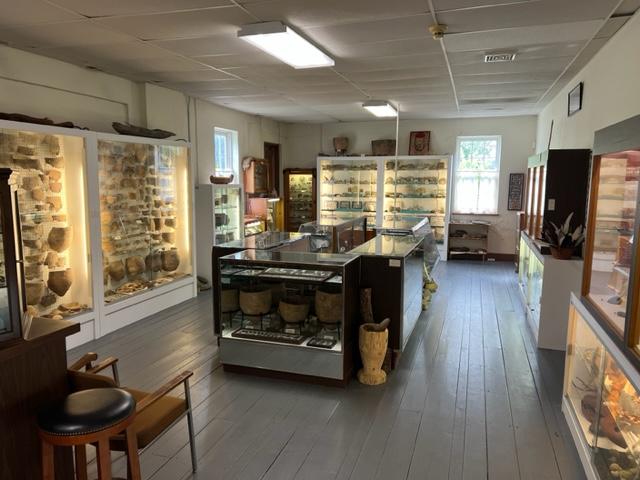
There is an extensive fossil collection that includes trilobites, shark teeth, crabs, lobsters and they even had a footprint of a dinosaur. What I thought was interesting was the dinosaur eggs (they were not found locally).
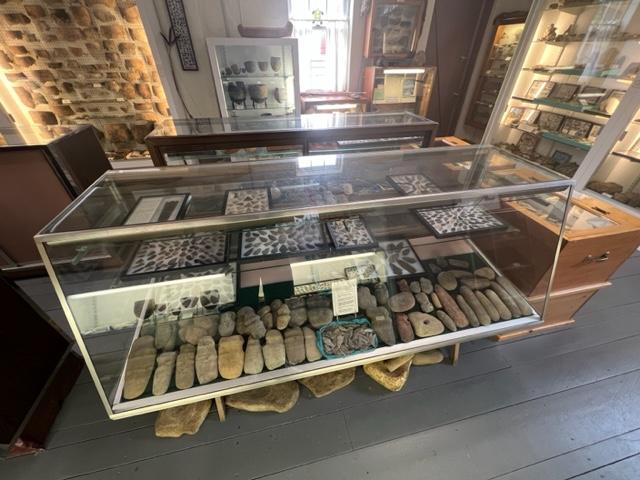
Each case is dedicated to subject matter and the whole museum can be seen in less than an hour.

History of the Alan E. Carman Museum of Prehistory:
The Museum was dedicated in 1997, the museum was established to house the Native American artifacts and prehistoric fossils collected by Alan Ewing Carman. Carman was an avocational archaeologist who spent 58 plus years collecting, excavating and researching Native American artifacts from southern New Jersey.

The Alan E. Carman biography
Since Carmen’s original gift to the Society, the museum has acquired a variety of artifacts and specimens from different donors that have enhanced the collection’s research and educational potential. The museum has been and continues to be a valuable resource for archaeologists, paleontologists, students, tour groups and the general public. Come visit our collections to learn more about southern New Jersey’s storied past or to use our extensive research materials.

The Dinosaur bones
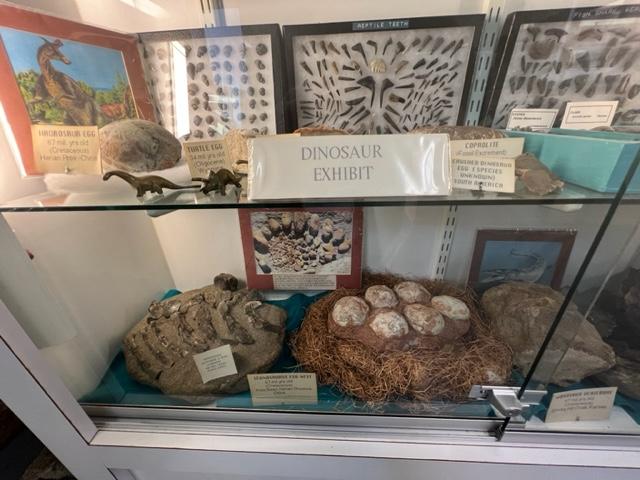
Dinosaur bones and eggs at the museum.
To enter the museum is to enter the world of the Native American ancestors that lived in the lower Delaware Valley. The Museum of Prehistory displays an incredible assortment of ancient artifacts and even older fossils that speak to this region’s fascinating prehistory.

The wonderful pottery collection of Native Americans.

Pottery and cooking items of Native Americans.
Our Mission:
(from the museum pamphlet)
The mission of the Cumberland County Historical Society is to preserve and promote the history and heritage of the county through acquisitions, collections, exhibits, research, educational programs and publications for the benefit of current and future generations.

Arrowheads and fishing artifacts.
The Alan Ewing Carman Museum of Prehistory supports this mission through the collection, preservation, interpretation and exhibition of pre-Contact period Native American artifacts from southern New Jersey. The museum serves as an institute for public education and a resource for archaeological research.
About the Collections:
(from the museum pamphlet)
The Native American artifacts were primarily acquired and donated by avocational archaeologist Alan Ewing Carman. Later donations have helped bolster this incredible collection of artifacts that all came from Southern New Jersey. To this day, the collection serves as an excellent resource for public education and academic research.
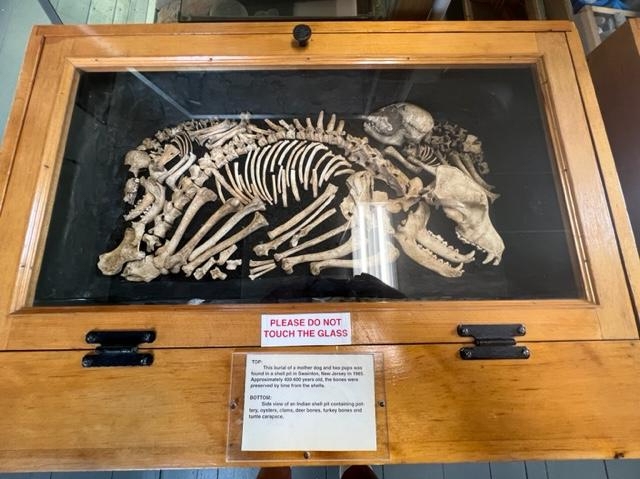
Six-Hundred-year-old dog bones.
The museum features a recreated burial of a mother dog and her two puppies that were lovingly interred about 800 years ago (museum website).
This video was on the history of Prehistory of the Lenape Indians:
The History of the Museum:
(From the museum pamphlet):
To visit the museum is to enter the world of the Indians who inhabited the lower Delaware Valley. At the end of the last Ice Age, the Paleo (Clovis) Indians were the first primitive people to penetrate this region. Many subsequent Indian cultures followed in their wake, leaving physical evidence of their passing in the earth’s archives. This salvaged evidence exhibited in the form of stone and bone artifacts, pottery and native crafts. When combined, they illustrate the evolution of the Indian societies who occupied southern New Jersey.
A major attraction to the Indians in this sector of the state was fossiliferious stone named “Cohansey Quartzite”. It was mined in the Vinicius of Greenwich, NJ. Other stone materials such as flint, jasper, thyolite and argillite were imported into the area and their mining locations are identified.
The Indians Fire making kits, manufacturing of pottery, use of gourds and flaking techniques, all make an interesting study of native crafts. Bone and shell remains salvaged from refuse pits depict their food sources. Of special interest, is the 800 year old mother dog and her two puppies which were unearthed near Swainton, NJ.
The Indians who inhabited Southern New Jersey at the time of the European contact were the Lenape, pronounced “Len-bop-pay”. Today they are known as the Delaware. Anthropologists have identified over 44 sub-divisions of the Lenape people who inhabited their ancestral homeland (Lenapehoking).
In the southern part of New Jersey, the little Siconese occupied the land along the Cohansey River; the Sewapose, the Maurice River and the Alloways, the Salem Creek and its tributaries. As a visitor enters the Museum, a map of Cumberland County pinpoints 115 areas of occupation which define population levels in Prehistoric times.
Of special interest to the children are over 1000 fossils from four time periods of the earth’s geological development. Extinct trilobites, whale and porpoise vertebrae, crabs, lobsters, squid, mollusks, sting rays and giant shark teeth fill the special display case. Also a foot print in the stone of a bird like dinosaur call a “ Grallator”.
All of these were found in New Jersey, Delaware, Maryland and Virginia. They illustrate a fascinating array of land and marine life which once roamed the earth’s primordial landscape. In addition, a cluster of 87 million year old Dinosaur eggs, a fossilized Snake egg and Turtle egg were donated in 2005. Ribs and remains of extinct reptiles fascinate and delight children on school tours. A wide assortment of publications are available to the public regarding the Indian’s culture and the study of fossils.
- Educational Museums
- Experiences and Tours
- Exploring Greenwich, NJ
- Exploring Historic Cumberland County, NJ
- Exploring Historic Salem County, NJ
- Exploring Salem NJ
- Historic Sites in New Jersey
- Small Historical Societies in New Jersey
- Small Museums and Galleries in New Jersey
- Uncategorized
- VisitingaMuseum.com
- Walking Greenwich, NJ

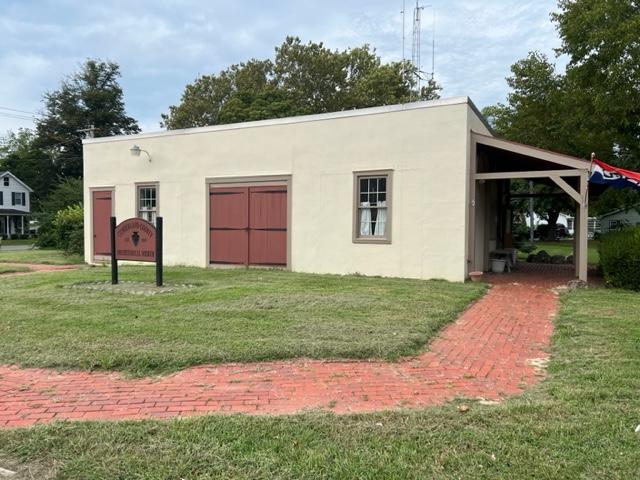
The Museum of Prehistory is a wonderful museum for children who like fossils and Native American objects and for adults who like to study the early history of the State of New Jersey.
LikeLiked by 1 person
Reblogged this on mywalkinmanhattan and commented:
Nice little museum for children and adults alike. Great for people who like Native American objects and fossils.
LikeLiked by 1 person
This excellent museum saves a trip to the Museum of Natural History in NYC. This collection is very extensive and detailed. It has interesting dinosaur bone and egg collection. The artifacts are so interesting.
LikeLiked by 1 person